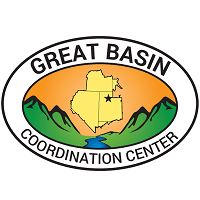Tools and Trainings
Visit the PJ website, authored by Rick Miller
Pinyon (Pinus spp.) and juniper (Juniperus spp.) woodlands occupy over 78,000 square miles of the Great Basin and northern Colorado Plateau. These woodlands have persisted for tens of thousands of years and provide important biodiversity and habitat for many species across the region. Yet, relatively recent infill of new trees into old-growth woodlands and expansion of trees into adjacent sagebrush-steppe, riparian, and aspen communities have created a considerable mix of concerns around wildfire, drought-mortality, invasive species, watershed function, tree removal, and loss of habitat, biodiversity, and resilience.
This website provides background information on the ecology and management of PJ woodlands useful to the interested public and emerging information important to resource managers.
1) PJ 101 provides a brief introduction to and description of PJ woodlands with links to more in-depth information.
2) FAQ (Frequently Asked Questions) briefly addresses questions related to the ecology and management of PJ woodlands.
3) Tools provides information and concepts for evaluating landscapes, which are specifically useful for predicting disturbance or vegetation management responses in PJ woodlands.
4) Literature provides brief summaries and links to recently published PJ woodlands studies. Study findings are highlighted and discussed in terms of our current understanding.
This website will be continually updated with new articles, questions, and tools.
PhenoMap is a new Web-based tool that managers can use to assess the production and location of high-quality forage. It uses satellite imagery to address the need for near-real-time information about plant life cycle events over large spatial areas. “This remote sensing tool can help prioritize management of rapidly degrading resources across the landscape, in near real time,” says Nancy Grulke, a PNW research ecologist with the project. “Tracking resource quality from week to week with imagery can not only support management decisions with empirical evidence, but also provide a visual tool for communication with landowners.”
Fireshed Registry guide.
The Fireshed Registry is a geospatial dashboard and decision tool built in ArcGIS online. It provides an interactive system to view a wide array of information about firesheds (see below) and monitor progress towards risk reduction from management investments. The Fireshed Registry is the geospatial data warehouse for the Forest Service Scenario Planning Platform. The system integrates available data into a series of panels that address specific question related to risk to developed areas. While the Fireshed Registry was organized around fire risk to developed areas, the framework does not preclude integrated assessment of other resource management priorities such as protecting water, wildlife habitat, and recreation opportunity. The all lands geography of the fireshed registry makes it a useful platform for shared stewardship as well.
View tool guide.
A new USGS report supported by the Northwest CASC presents a novel decision making framework to help resource managers use climate science and local knowledge to identify adaptation strategies appropriate for their specific situations. This Climate Adaptation Integration Tool (CAIT) consists of four steps:
- Define a focal resource and assess its vulnerability to climate change.
- Answer Critical Questions about the future climactic suitability, value, and current condition of these resources.
- Select appropriate management approaches based on the answers to these questions.
- Select adaptation strategies and actions most likely to address the management approaches identified.
Within the tool, managers can find resources to make decisions at each step, such as information on finding and choosing appropriate downscaled climate models and decision-making matrices to help link decisions across steps.
Access Western Migrations Tool
In 2018, the U.S. Geological Survey assembled a Corridor Mapping Team to assist western states in mapping bison, elk, moose, mule deer, and pronghorn corridors using existing GPS data. One outcome of the team is this mapping tool, which provides public access to data on migrating ungulates through a unique partnership between participating western states. This tool enables viewing of mapped migration corridors, routes, stopovers and ranges. Choices for base maps include land cover and land management. In addition, users can add their own zipped ArcGIS shapefile to the viewer through the “Add Data” button. Email user questions to: westernmigrations@uwyo.edu.
FireWorks is an educational program about the science of wildland fire, designed for students in grades K-12. FireWorks provides students with interactive, hands-on materials to study wildland fire. It is highly interdisciplinary and students learn about properties of matter, chemical and physical processes, ecosystem fluctuations and cycles, habitat and survival, and human interactions with ecosystems. Students using FireWorks ask questions, gather information, analyze and interpret it, and communicate their discoveries.
We combed through the FireWorks content, to provide you quick access to the lessons that include Great Basin-focused content.
View the Great Basin-Focused FireWorks Lessons.
Visit the Great Basin Coordination Center website, the focal point for coordinating the mobilization of resources for wildland fire and other incidents throughout the Great Basin Geographic Area. The Great Basin Geographic Area encompasses Utah, Nevada, Idaho-south of the Salmon River, the western Wyoming mountains and the Arizona Strip. GBCC is located in Salt Lake City, Utah, and provides Intelligence and Predictive Services related products for use by the wildland fire community for purposes of wildland fire and incident management decision-making.
Wildfire has historically played an important role in the health and structure of Oregon’s dry forests. Prescribed fire is a valuable tool used to restore forest health, increase firefighter safety, and better protect nearby human resources in these fire-adapted landscapes.
Access the videos ranging from about 1:30-10:00 in length.
The most common misconception of wildfire is that all fire is bad. But there are important benefits that smaller and more frequent fires offer to the environment. Matt Jolly, an ecologist at the U.S. Forest Service Rocky Mountain Research Station, talks about the natural and important role of fire in maintaining a healthy ecosystem.






